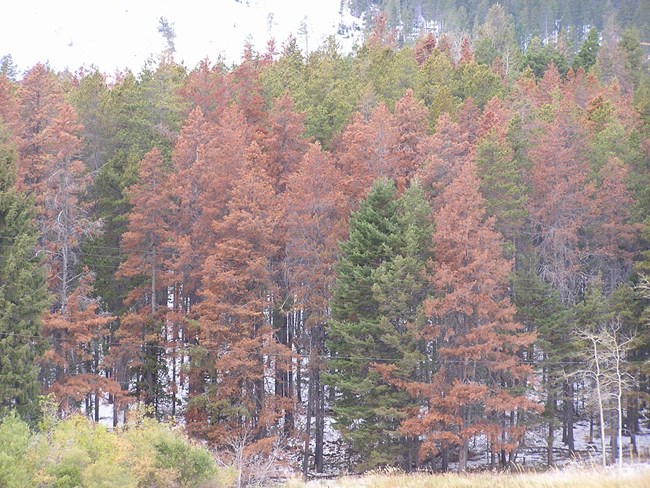Last updated: January 14, 2025
Article
Clearwater Canoe Camp

USFS
After their long mountain crossing, Lewis and Clark arrived here on September 26, 1805, eager to return to water travel. With the help of local Nez Perce, they spent eleven days building five dugout canoes from large ponderosa pine logs. Lewis also added a ponderosa specimen from this site to his plant collection.33
Forest trees are vulnerable to climate-related threats like drought, fire, insects, disease. The trees that Lewis collected and that were so important to the expedition’s river travel to the coast have been affected by increasing mountain pine beetle populations. Across the western United States, winter temperatures have warmed by about seven degrees Fahrenheit since 1960. Recent winter lows have not been cold enough to reduce populations of pine beetles, causing beetle-caused tree mortality to increase.34
Citations:
33 NPS, “Canoe Camp,” Lewis & Clark National Historic Trail, last updated September 25, 2020, https://www.nps.gov/places/canoe-camp.htm; Joseph A. Mussulman, “The Clearwater Canoe Camp,” Discover Lewis & Clark, accessed August 26, 2024, https://lewis-clark.org/the-trail/clearwater-snake-rivers/clearwater-canoe-camp/; Lewis and Clark Trail Heritage Foundation, “October 1, 1805: The Nez Perce Method,” Discover Lewis & Clark, accessed August 26, 2024, https://lewis-clark.org/day-by-day/1-oct-1805/; William W. Bevis, “The Canoes: Appendix,” The Dugout Canoes of Lewis and Clark, Discover Lewis & Clark, accessed August 26, 2024, https://lewis-clark.org/boats/the- dugout-canoes-of-lewis-and-clark/appendix/.
34 Aaron S. Weed, et al., “Geographically Variable Response of Dendroctonus ponderosae to Winter Warming in the Western United States,” Landscape Ecology 30 (2015): 1075–93, here 1075; Michelle C. Agne, et al., “Interactions of Predominant Insects and Diseases with Climate Change in Douglas-fir Forests of Western Oregon and Washington, U.S.A.,” Forest Ecology and Management 409 (February 1, 2018): 317–32, here 317.
